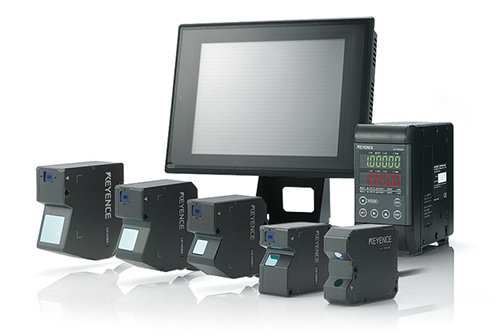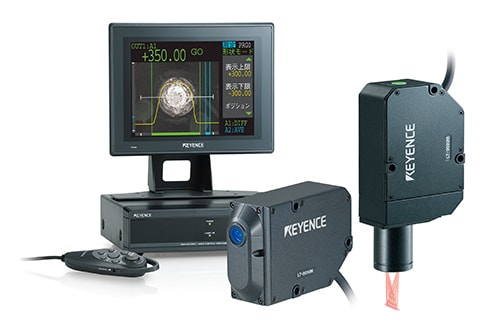Types of Measurements Systems1D Laser Displacement Sensors
Triangulation Method
As shown in the following figure, a laser hits the target, light reflected off of the target is concentrated through the receiving lens and is focused onto the light receiving element. If the distance from the sensor to the target changes, the angle of the reflected light changes causing the position of the received light to change on the light receiving element. This change is proportional to the movement amount of the target, because we know the distance between each position on the light receiving element we are able to determine displacement.
- Reference distance

- Near end of Measurement Range
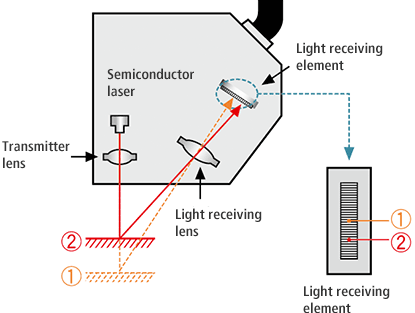
- Far end of Measurement Range

FLAGSHIP PRODUCT
Confocal Method
A laser is transmitted and received through a pair of lenses attached to an oscillating tunning fork. When the intensity of the received light is greater than a set threshold the position of the tunning fork is measured, because this position relates to a specific distance from the sensor, displacement can be calculated.

- Target not in focus
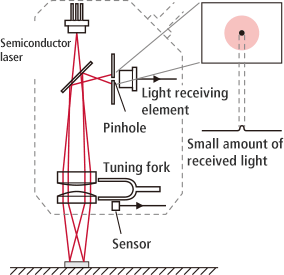 Only a small amount of received light passes through the pinhole.
Only a small amount of received light passes through the pinhole. - Target in focus
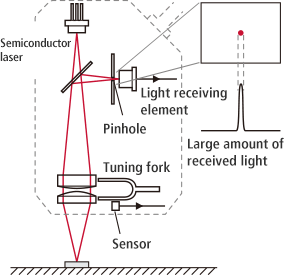 All of the received light passes through the pinhole.
All of the received light passes through the pinhole.
FLAGSHIP PRODUCT
Spectral Interference Method
SLD
The SLD emits a spectrum of light at a target. Within the sensor head there is a half transparent mirror which reflects some of this light back into the sensor, creating a reference surface, while allowing the rest of the light to pass through and reflect off of the target surface back into the sensor.
Interference light
The two reflected light beams interfere with each other. The intensity of the interference is dependent on the distance between the reference surface and the target.
Spectroscopic Analysis
Splitting the interference light into different wavelengths with the spectroscope produces an optical intensity distribution for a specific wavelength. The distance to the target is obtained by carrying out waveform analysis on the distribution.






